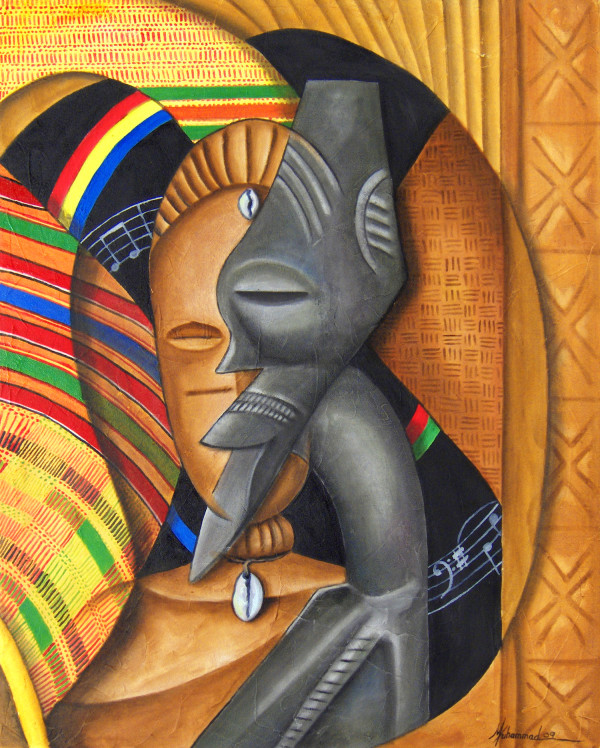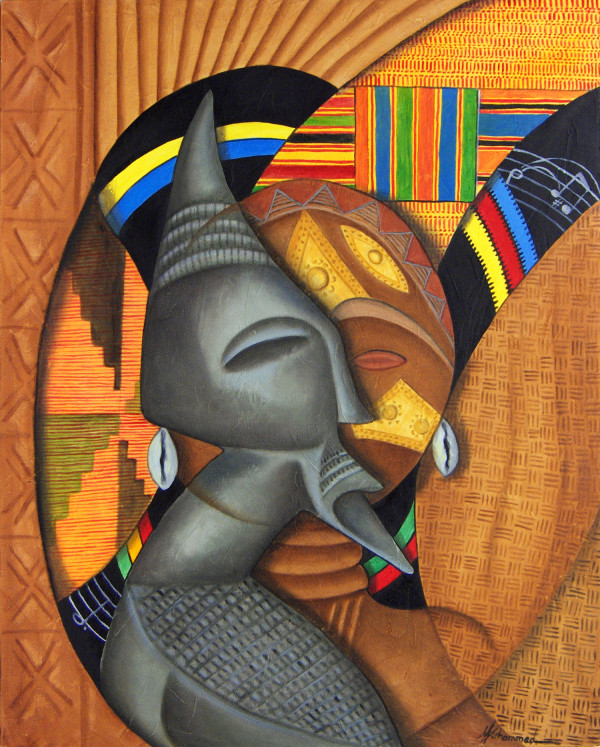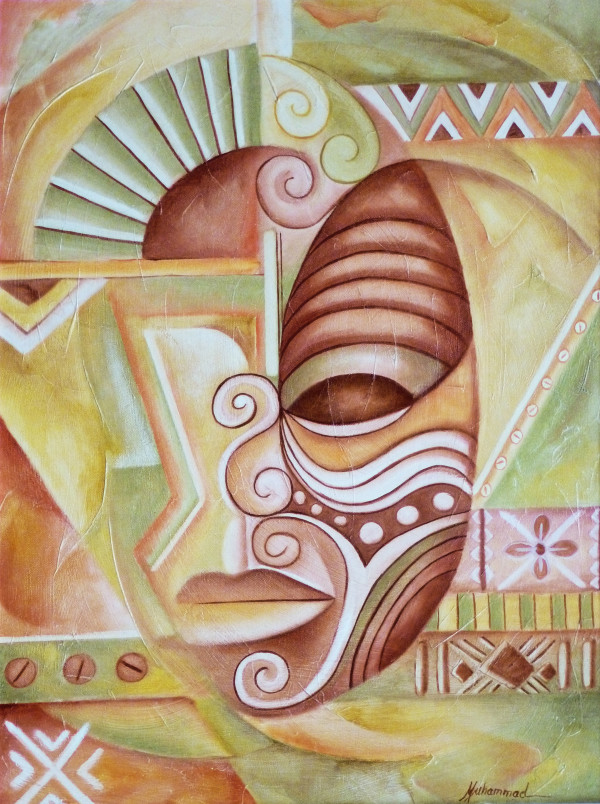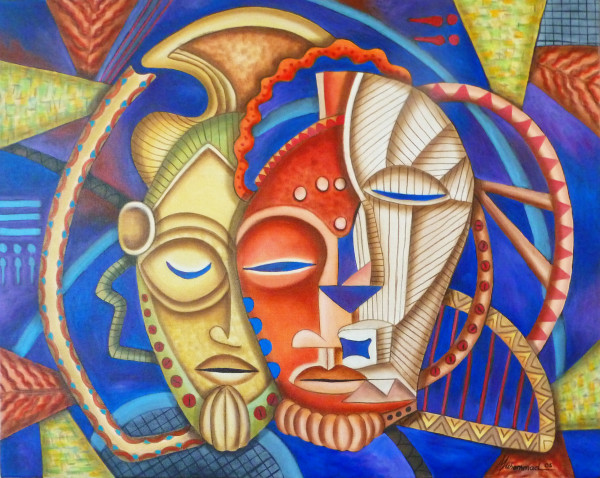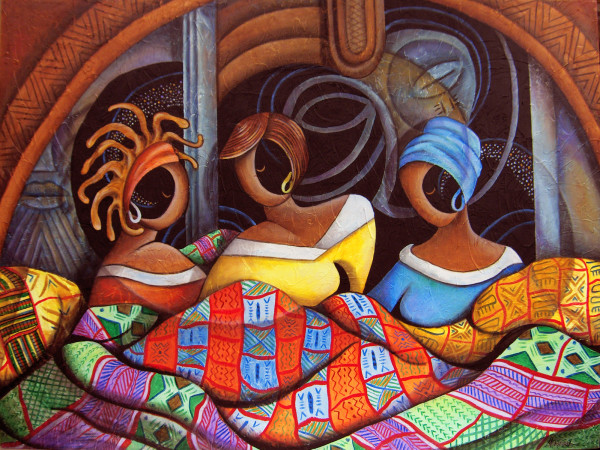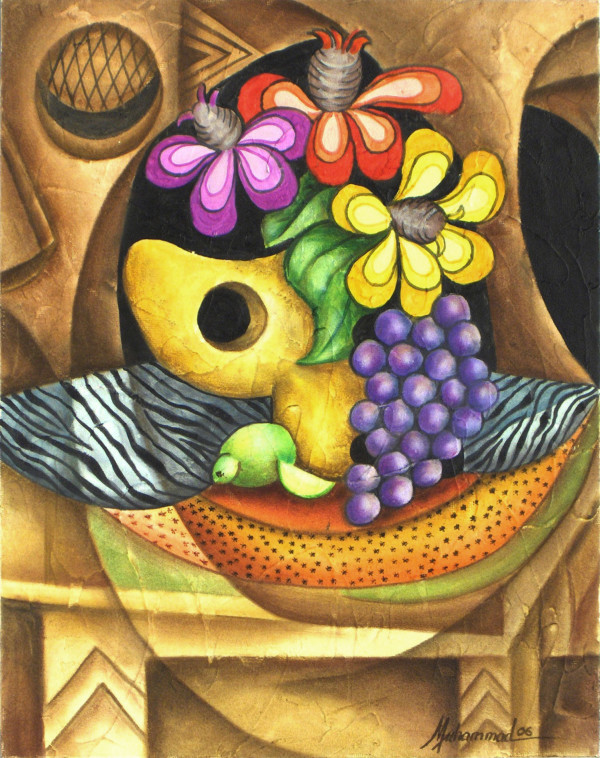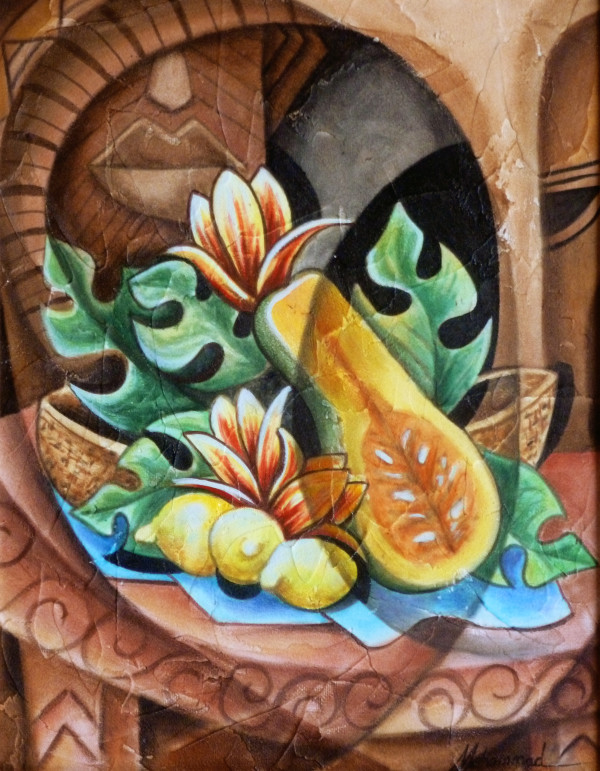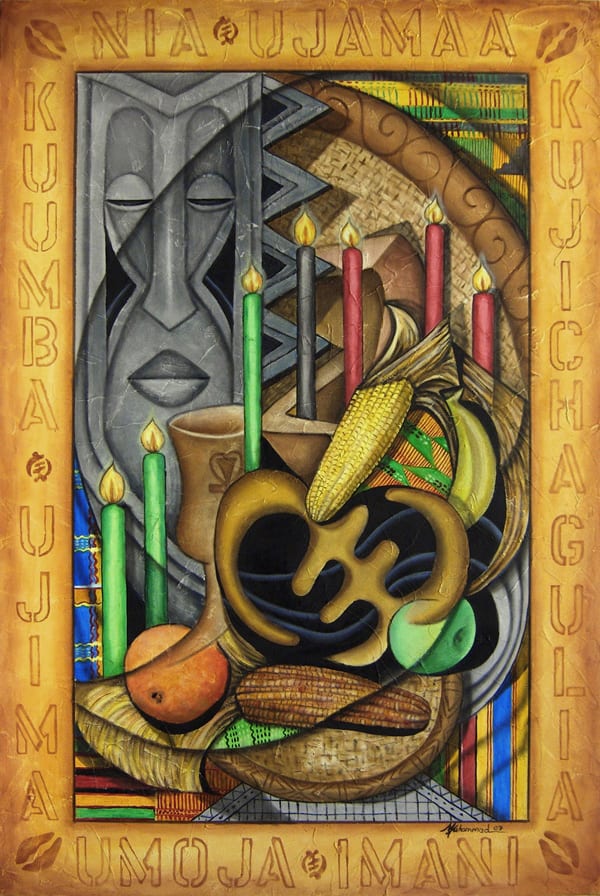
Kwanzaa is an African American and Pan-African holiday which celebrates family, community and culture. Kwanzaa is a CULTURAL holiday, not a religious one.
This painting is done in my signature style of "Plasticism". The kinara setting is reversed as the mask, representing the ancestors, is looking on.
Kwanzaa was created in 1996 by Dr. Maulana Karenga, professor and chair of the Department of Black Studies at California State University, Long Beach. It is celebrated from December 26 through January 1.
The origins of Kwanzaa are in the first harvest celebrations of Africa from which it takes its name. The name Kwanzaa is derived from the phrase "matunda ya kwanza" which means "first fruits" in Swahili.
Kwanzaa celebrates and reinforces family and community values. It stresses self reliance and creativity. The elements of Kwanzaa celebration includes the following seven principals:
Umoja (Unity); To strive for and maintain unity in the family, community, nation, and race.
Kujichagulia (Self-Determination); To define ourselves, name ourselves, create for ourselves and speak for ourselves.
Ujima (Collective Work and Responsibility); To build and mauintain our community together and make our brother's and sister's problems our problems and solve them together.
Ujamaa (Cooperative Economics); To build and maintain our own stores, shops and other businesses and to profit from them together.
Nia (Purpose); To make our collective vocation the building and developing of our community in order to restore our people to their traditional greatness.
Kuumba (Creativity); To do always as much as we can, in the way we can, in order to leave our community more beautiful and beneficial than we inherited it.
Imani (Faith); To believe with all our heart in our people, our parents, our teachers, our leaders and righteousness and victory of our struggle.
- Subject Matter: Plastic Space Figurative
- Current Location: Maruva DQ Studio
- Collections: Plastic Space Figurative

